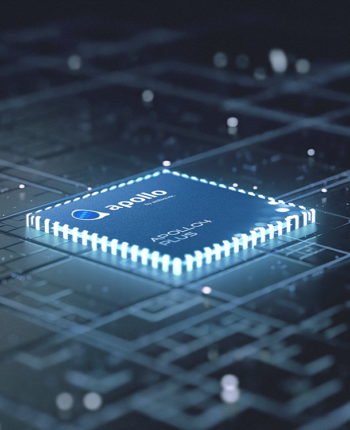The Definitive Guide to Ambiq apollo 4
The Definitive Guide to Ambiq apollo 4
Blog Article

The existing model has weaknesses. It may well battle with correctly simulating the physics of a complex scene, and could not comprehend certain occasions of lead to and impact. For example, an individual might have a bite out of a cookie, but afterward, the cookie might not Have a very Chunk mark.
We signify films and pictures as collections of scaled-down units of knowledge referred to as patches, each of and that is akin to your token in GPT.
Prompt: A litter of golden retriever puppies actively playing in the snow. Their heads pop out of the snow, included in.
Automation Question: Photograph yourself using an assistant who in no way sleeps, in no way desires a coffee split and works round-the-clock without the need of complaining.
Around speaking, the more parameters a model has, the more details it can soak up from its teaching information, and the greater exact its predictions about new data are going to be.
Ashish is usually a techology expert with 13+ years of working experience and makes a speciality of Details Science, the Python ecosystem and Django, DevOps and automation. He makes a speciality of the design and supply of essential, impactful programs.
SleepKit delivers quite a few modes that could be invoked for just a provided process. These modes is often accessed via the CLI or right throughout the Python bundle.
She wears sunglasses and pink lipstick. She walks confidently and casually. The road is damp and reflective, making check here a mirror impact from the vibrant lights. Several pedestrians stroll about.
In which attainable, our ModelZoo include things like the pre-trained model. If dataset licenses protect against that, the scripts and documentation walk by the process of attaining the dataset and education the model.
The “best” language model modifications in regards to specific duties and disorders. In my update of September 2021, many of the ideal-known and strongest LMs consist of GPT-3 formulated by OpenAI.
AMP’s AI platform makes use of Computer system eyesight to recognize designs of distinct recyclable components throughout the commonly complex waste stream of folded, smashed, and tattered objects.
Apollo510 also increases its memory ability around the prior generation with four MB of on-chip NVM and 3.75 MB of on-chip SRAM and TCM, so developers have clean development and much more application flexibility. For excess-significant neural network models or graphics belongings, Apollo510 has a number of high bandwidth off-chip interfaces, individually effective at peak throughputs around 500MB/s and sustained throughput over 300MB/s.
Visualize, For example, a situation where your favored streaming platform recommends an Completely incredible movie for your Friday night or any time you command your smartphone's Digital assistant, powered by generative AI models, to answer properly by using its voice to know and reply to your voice. Artificial intelligence powers these every day miracles.
As innovators go on to invest in AI-driven methods, we will anticipate a transformative effect on recycling techniques, accelerating our journey in direction of a far more sustainable World.
Accelerating the Development of Optimized AI Features with Ambiq’s neuralSPOT
Ambiq’s neuralSPOT® is an open-source AI developer-focused SDK designed for our latest Apollo4 Plus system-on-chip (SoC) family. neuralSPOT provides an on-ramp to the rapid development of AI features for our customers’ AI applications and products. Included with neuralSPOT are Ambiq-optimized libraries, tools, and examples to help jumpstart AI-focused applications.
UNDERSTANDING NEURALSPOT VIA THE BASIC TENSORFLOW EXAMPLE
Often, the best way to ramp up on a new software library is through a comprehensive example – this is why neuralSPOt includes basic_tf_stub, an illustrative example that leverages many of neuralSPOT’s features.
In this article, we walk through the example block-by-block, using it as a guide to building AI features using neuralSPOT.
Ambiq's Vice President of Artificial Intelligence, Carlos Morales, went on CNBC Street Signs Asia to discuss the power consumption of AI and trends in endpoint devices.
Since 2010, Ambiq has been a leader in ultra-low power semiconductors that enable endpoint devices with more data-driven and AI-capable features while dropping the energy requirements up to 10X lower. They do this with the patented Subthreshold Power Optimized Technology (SPOT ®) platform.
Computer inferencing is complex, and for endpoint AI to become practical, these devices have to drop from megawatts of power to microwatts. This is where Ambiq has the power to change industries such as healthcare, agriculture, and Industrial IoT.
Ambiq Designs Low-Power for Next Gen Endpoint Devices
Ambiq’s VP of Architecture and Product Planning, Dan Cermak, joins the ipXchange team at CES to discuss how manufacturers can improve their products with ultra-low power. As technology becomes more sophisticated, energy consumption continues to grow. Here Dan outlines how Ambiq stays ahead of the curve by planning for energy requirements 5 years in advance.
Ambiq’s VP of Architecture and Product Planning at Embedded World 2024
Ambiq specializes in ultra-low-power SoC's designed to make intelligent battery-powered endpoint solutions a reality. These days, just about every endpoint device incorporates AI features, including anomaly detection, speech-driven user interfaces, audio event detection and classification, and health monitoring.
Ambiq's ultra low power, high-performance platforms are ideal for implementing this class of AI features, and we at Ambiq are dedicated to making implementation as easy as possible by offering open-source developer-centric toolkits, software libraries, and reference models to accelerate AI feature development.

NEURALSPOT - BECAUSE AI IS HARD ENOUGH
neuralSPOT is an AI developer-focused SDK in the true sense of the word: it includes everything you need to get your AI model onto Ambiq’s platform. You’ll find libraries for talking to sensors, managing SoC peripherals, and controlling power and memory configurations, along with tools for easily debugging your model from your laptop or PC, and examples that tie it all together.
Facebook | Linkedin | Twitter | YouTube Report this page